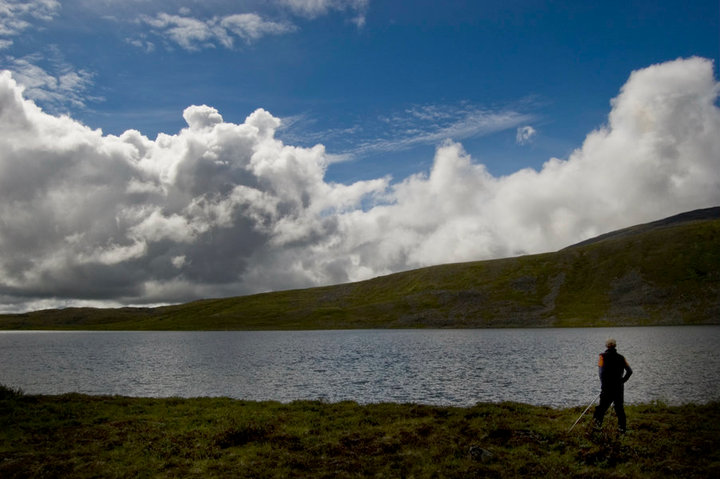This month the Wyoming Outdoor Council welcomed its newest member of the team, John Burrows, who serves as conservation advocate. John joins our robust program team and will work closely on air and water quality and other natural resource issues.
A lifelong angler and avid backcountry adventurer, Burrows says being outdoors provides endless opportunities to learn and to teach. It was his passion for environmental education that inspired him to become a NOLS instructor, and it was his drive to actively protect the places that make Wyoming unique that brought him to the Outdoor Council.
Regarding his journey from teaching outdoor skills to conservation, John said he believes “it’s not enough just to go out and recreate and have fun. What are people doing and how are you actively working to protect the things we’re so lucky to have?”
I recently visited with John to learn more about what brought him to Wyoming and to conservation work at WOC:
WHAT FIRST HOOKED YOU ON THE OUTDOORS?
I grew up in western North Carolina in a small outdoor recreation-based town, in one of the few counties back east that is predominantly public land. I had a grandfather who loved to fish. Some of my best childhood memories were from when he’d pick me up from school and we’d go fish the rivers around Pisgah National Forest together. After college I knew I wanted to be out west. It was exposure at an early age in North Carolina that definitely got me hooked, and I knew from an early age that the conservation world and natural resources were a field I wanted to spend a career in.
WHAT’S YOUR EXPERIENCE IN CONSERVATION WORK?
After graduate school, I got a fellowship with an organization called The Forestland Group. I spent three months working with them on forestry conservation projects in upstate New York, New Hampshire, West Virginia, and eastern North Carolina. That was a very powerful professional work experience where I gained more respect for industry and the quality of work that was being done, and the sincerity behind it. Their profit models were built largely around “ecosystem service markets” — that’s been a big cultural shift in the conservation discussion for natural resource-based businesses. It’s not just about raw commodities — timber, coal — it’s also about valuing the natural services a healthy environment provides, like clean air and clean water. We need to be on the frontlines with organizations and businesses that are asking these questions and making an economic argument for conservation: How can we value the tree for more than its timber? How do we value clean water and clean air? Not easy questions to answer, but a lot of people and businesses are doing it, and in the process giving conservation an economic leg to stand on.
WHAT DRAWS YOU TO ENVIRONMENTAL EDUCATION?
There’s an inspirational side of environmental education. We live in a beautiful world with so much diversity and so much to get from being immersed in a natural landscape. When I think of teaching there’s a curiosity component that I try to emphasize. Ask questions: Why are those rocks there? What are you noticing about these mountains? What species of bird is that? A huge part of teaching is spreading that excitement. If you’re really excited about something, passionate about it, that’s contagious. It’s incredibly fulfilling to see this with students — and we’re all students at some level.
This last summer I was working for NOLS in Alaska’s Wrangell-St. Elias National Park & Preserve, and wow. It was climate chaos up there. Alaska had one of its biggest heat waves in history. We were up along glaciers when it was consistently above 80 degrees, and the rivers below where like something you would see at a whitewater theme park. We couldn’t cross rivers because the meltwater was so high. There were bad forest fires down lower. True Alaskan bushmen who have been up there their whole lives said they’d seen nothing like it. It makes this work seem all that more relevant.
WHAT WOULD BE YOUR IDEAL WEEK OUTSIDE IN WYOMING?
That’s pretty easy for me. I’d be hiking into a remote drainage fly-fishing for cutthroat trout with friends and family. I’ve really grown fond of the Winds, and the Bighorns, too. It would probably be sometime in early September, just as the aspen start to turn — hiking, and getting up high in the mountains with a fly rod.
WHAT ARE YOUR GOALS FOR THE FUTURE?
Honestly, I’m just excited to be here at WOC and working in a state that is truly ground zero for so many of the big environmental questions and challenges of the 21st century. We are playing those out here with our state budget, our state’s economy, our natural resources, and our quality of life. These things are all connected and it feels like being on the front lines of something that’s really significant and important. We have to get this right.
(You can read John’s staff bio here.)


